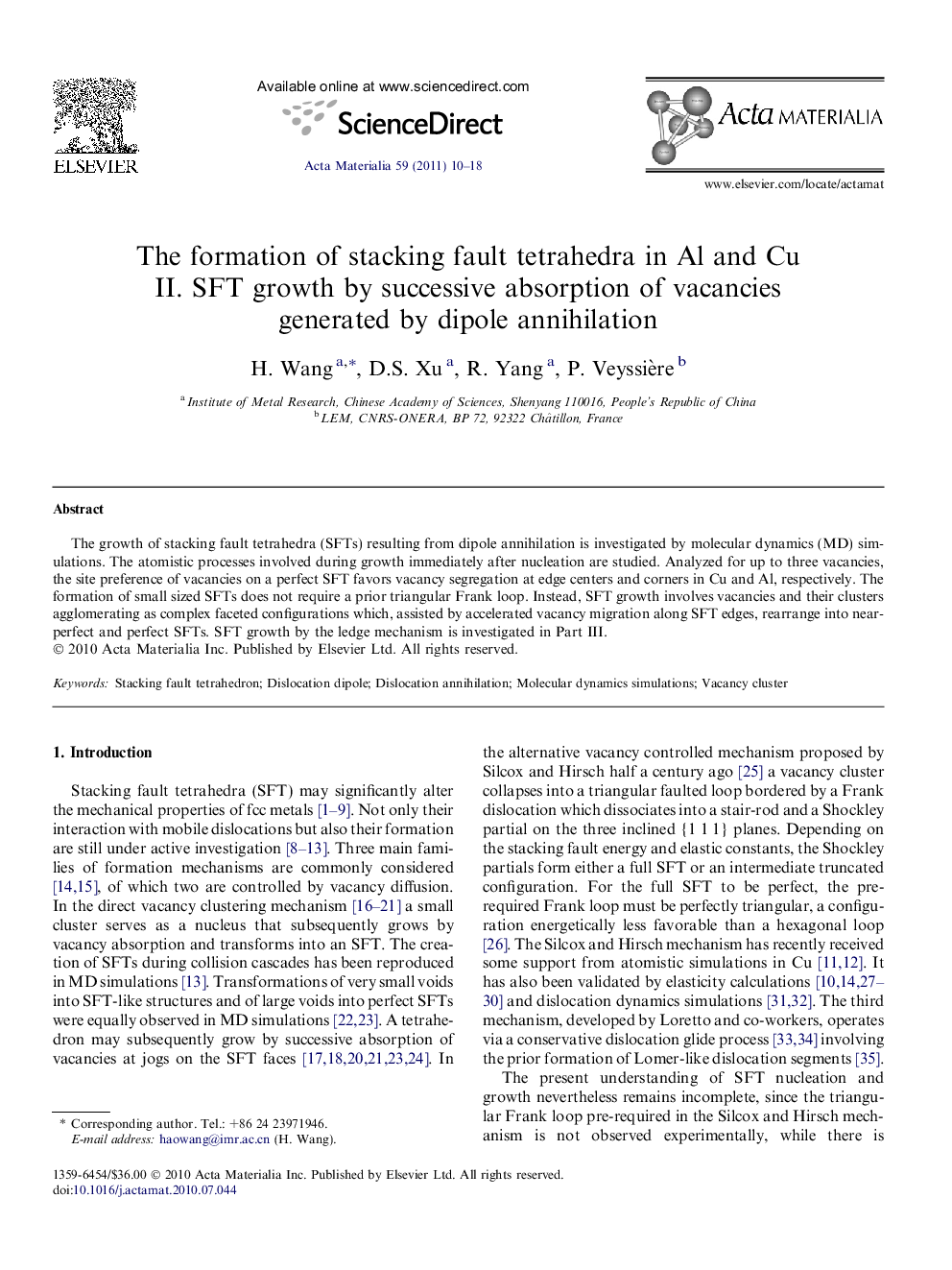| Article ID | Journal | Published Year | Pages | File Type |
|---|---|---|---|---|
| 1447816 | Acta Materialia | 2011 | 9 Pages |
The growth of stacking fault tetrahedra (SFTs) resulting from dipole annihilation is investigated by molecular dynamics (MD) simulations. The atomistic processes involved during growth immediately after nucleation are studied. Analyzed for up to three vacancies, the site preference of vacancies on a perfect SFT favors vacancy segregation at edge centers and corners in Cu and Al, respectively. The formation of small sized SFTs does not require a prior triangular Frank loop. Instead, SFT growth involves vacancies and their clusters agglomerating as complex faceted configurations which, assisted by accelerated vacancy migration along SFT edges, rearrange into near-perfect and perfect SFTs. SFT growth by the ledge mechanism is investigated in Part III.
